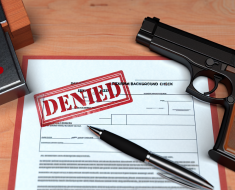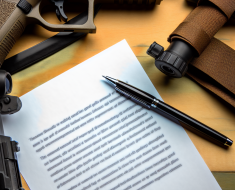Navigating Firearm Laws When Traveling Across State Lines

Traveling with firearms across state lines in the United States is a complex endeavor fraught with legal nuances, varying regulations, and potential pitfalls. For gun owners, hunters, law enforcement officers, or individuals moving residences, understanding the legal landscape is crucial to avoid inadvertent violations that can result in hefty fines, confiscations, or even criminal charges. This article delves into the intricacies of firearm laws when crossing state boundaries, highlighting key considerations, statutory frameworks, and practical tips to ensure lawful travel.
Understanding the Patchwork of State Firearm Laws
One of the fundamental challenges in navigating firearm laws across states is the lack of uniformity. Each state enacts its own set of regulations governing firearm possession, transportation, concealed carry permits, and prohibited items. This decentralized approach leads to a patchwork of rules that can differ dramatically from one jurisdiction to another.
For example:
- Concealed Carry Permits: Some states have “shall-issue” policies that require permits to be issued if criteria are met, while others are “may-issue,” giving authorities discretion. A permit valid in one state may not be recognized in another.
- Magazine Capacity Limits: States like California and New York limit magazine capacity to 10 rounds or fewer, whereas many other states have no such restrictions.
- Types of Firearms Allowed: Certain states ban specific firearms such as assault weapons or require registration for certain models.
This variability means that a traveler carrying a legally owned firearm in one state could inadvertently violate the law when crossing into another.
The Federal Framework: The Firearm Owners Protection Act (FOPA)
Despite the complexities at the state level, federal law provides some protections for individuals transporting firearms across state lines. The primary statute governing this area is the Firearm Owners Protection Act (FOPA), enacted in 1986 as an amendment to the Gun Control Act of 1968.
The FOPA’s “Safe Passage” provision is particularly relevant for travelers:
- Safe Passage Clause: Under 18 U.S.C. § 926A, individuals traveling through states where their firearms might otherwise be illegal are protected if they meet specific conditions:
- The firearm must be unloaded.
- The firearm must be locked in a container other than the glove compartment or console (e.g., a locked case in the trunk).
- The traveler must be passing through the state without unlawful intent (e.g., not stopping for extended periods or engaging in prohibited activities).
This provision was designed to prevent unwarranted prosecution for simply traveling through states with strict gun laws while legally carrying firearms from their home state. However, it’s important to note that this protection applies primarily to transportation—possession and use remain subject to each state’s laws once you stop or engage in activities within their borders.
Case Study: United States v. Bowe (2003)
A notable case illustrating FOPA’s protection is United States v. Bowe. In this case, a traveler was stopped while driving through New Jersey with firearms stored according to FOPA’s requirements. Although New Jersey had strict gun laws prohibiting possession of certain firearms, the court ruled that Bowe was protected under FOPA’s safe passage clause because he was merely passing through without unlawful intent and complied with storage regulations.
State-by-State Permit Recognition and Reciprocity Agreements
A significant consideration for travelers carrying concealed firearms is whether their home state permit is recognized by other states they plan to visit or pass through. This recognition varies widely and depends on reciprocity agreements between states.
- No Universal Standard: There is no federal mandate requiring states to recognize out-of-state permits; it remains a matter of individual state policy.
- Reciprocity Maps and Tools: Many organizations maintain updated maps showing which states recognize which permits—for example, permits issued by Florida may be accepted in several southern states but not in California or New York.
- Non-Resident Permits: Some states issue non-resident concealed carry permits that can facilitate legal carry across multiple jurisdictions.
Example: A Texas resident holding a concealed handgun license can legally carry concealed in Oklahoma due to reciprocity but would violate laws if carrying concealed in Illinois without an Illinois permit.
Important Reminder
A traveler should never assume reciprocity; always check current information before traveling because changes occur frequently due to legislative updates or court rulings. Additionally, some states only recognize permits from specific states with equivalent standards (e.g., training requirements), further complicating compliance.
Practical Tips for Traveling Legally With Firearms Across State Lines
Navigating this complex legal environment requires careful planning and adherence to both federal and state laws. Below are practical tips every firearm owner should consider when traveling:
- Research State Laws Thoroughly: Before embarking on your trip, review each state’s firearm laws along your route—including transport restrictions, magazine limits, prohibited weapons, and permit recognition.
- Use Proper Storage Methods During Transit:






